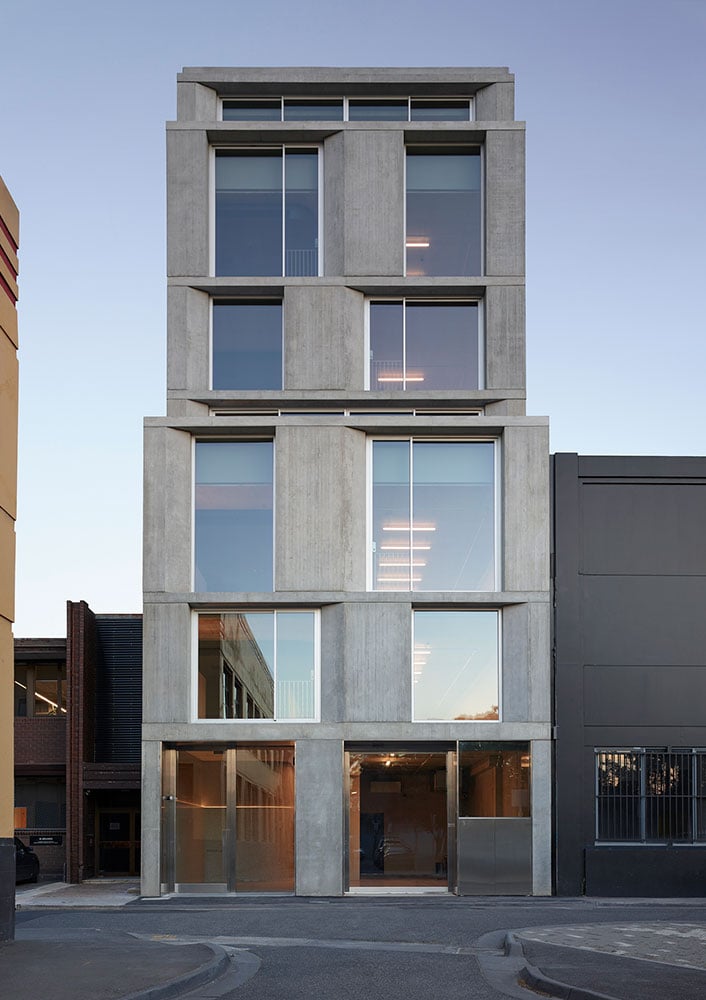A futuristic design studio, an entire army barracks and a heritage hotel with a modern twist are among those to make the shortlist of extraordinarily creative commercial projects nominated in this year’s Australian Institute of Architects’ 2021 National Architecture Awards.
Six projects across the country were recently announced as in the running for the nation’s highest accolade for commercial architecture. The winner will be announced at a November 4 virtual ceremony which will also mark 40 years for the prestigious event. After covid forced last year’s awards online for the first time, the national event was viewed by 3000 people on the night and a further 30,000 worldwide.
Here is an overview of those in the running for the AIA National Award for Commercial Architecture 2021:
Collins Arch – Woods Bagot and Shop Architects
WHAT: An enormous $1.25 billion mixed-use development in the heart of Melbourne CBD comprising offices, a luxury hotel, prestige residences, dining, retail and 1900sqm of open space with a park and amphitheatre. Its creators deem Collins Arch Australia’s first “truly mixed-use building” due to its diverse components.
FINER POINTS: The 6000sqm landmark development sits in an ideal location amid Melbourne’s premier commercial and retail strip at 447 Collins Street. The eight-level sky bridge joining Collins Arch’s two towers across a span of 14m adds wow factor. The structure ticks so many boxes it won the top award for Commercial Architecture at the Australian Institute of Architects’ 2021 Victorian Architecture Awards announced in June.
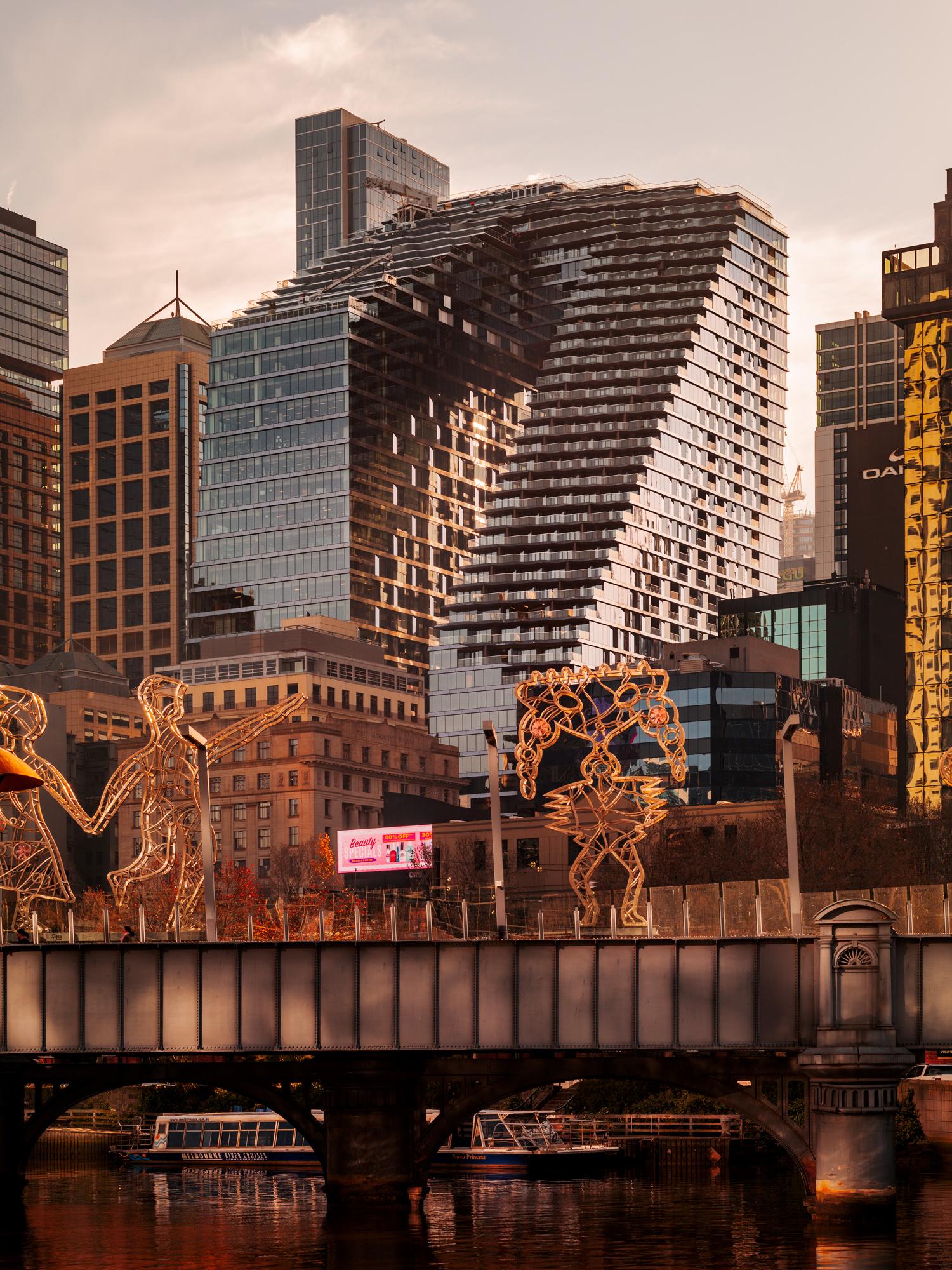
Prestigious residences occupy the upper levels of both towers, with exclusive access to resort-style amenities, including a pool, gym and sky garden, and the sky bridge, providing breathtaking views across Melbourne.
Land 121 Facilities Project, Lavarack Barracks – BVN
WHAT: Land 121 could well be Australia’s most edgy army base. The architect-designed, master-planned redevelopment of Townsville’s Lavarack Barracks sets a new benchmark for defence facilities. Lavarack Barracks is one of the Department of Defence’s largest bases and home to the Australian Army’s 3rd Brigade.
FINER POINTS: Between 1999 and 2019 BVN manifested cutting edge urban design over a 4 million sqm site with 250,000sqm gross floor area to create accommodation units, mess facilities, working accommodation, training facilities, workshops and logistical facilities. Lavarack Barracks won two accolades at Queensland’s architecture awards in July before the project progressed to the national competition.
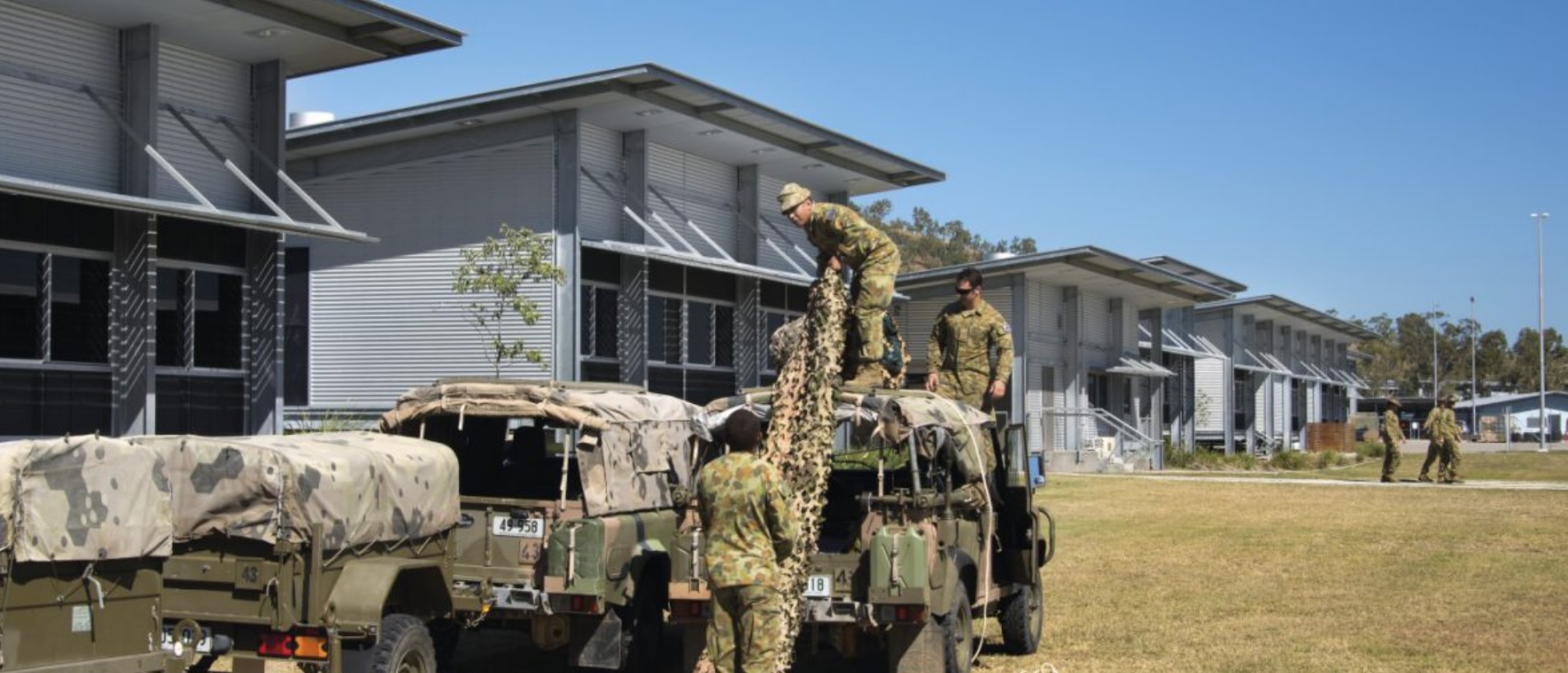
Meals on Wheels SA Head Office – JPE Design Studio
WHAT: A new head office complex which successfully transports Australia’s iconic 1950s-established meal delivery service into the 21st century. JPE combined administrative offices and commercial kitchen functions in a modern two storey commercial building arranged around a central courtyard.
FINER POINTS: Generous use of glass and high ceilings allow light and air to flow into the contemporary workspaces while the central courtyard creates a perfect venue for staff gatherings, incidental connections and events. The architect’s brief states how important it was to create not only a modern facility that allowed collaboration but also one that expressed the “warmth, openness, and approachability” at the heart of the renowned non-profit organisation. “With a rich history dating back to 1954, it was important for this building to showcase the significance of Meals on Wheels and their role in serving the community.”
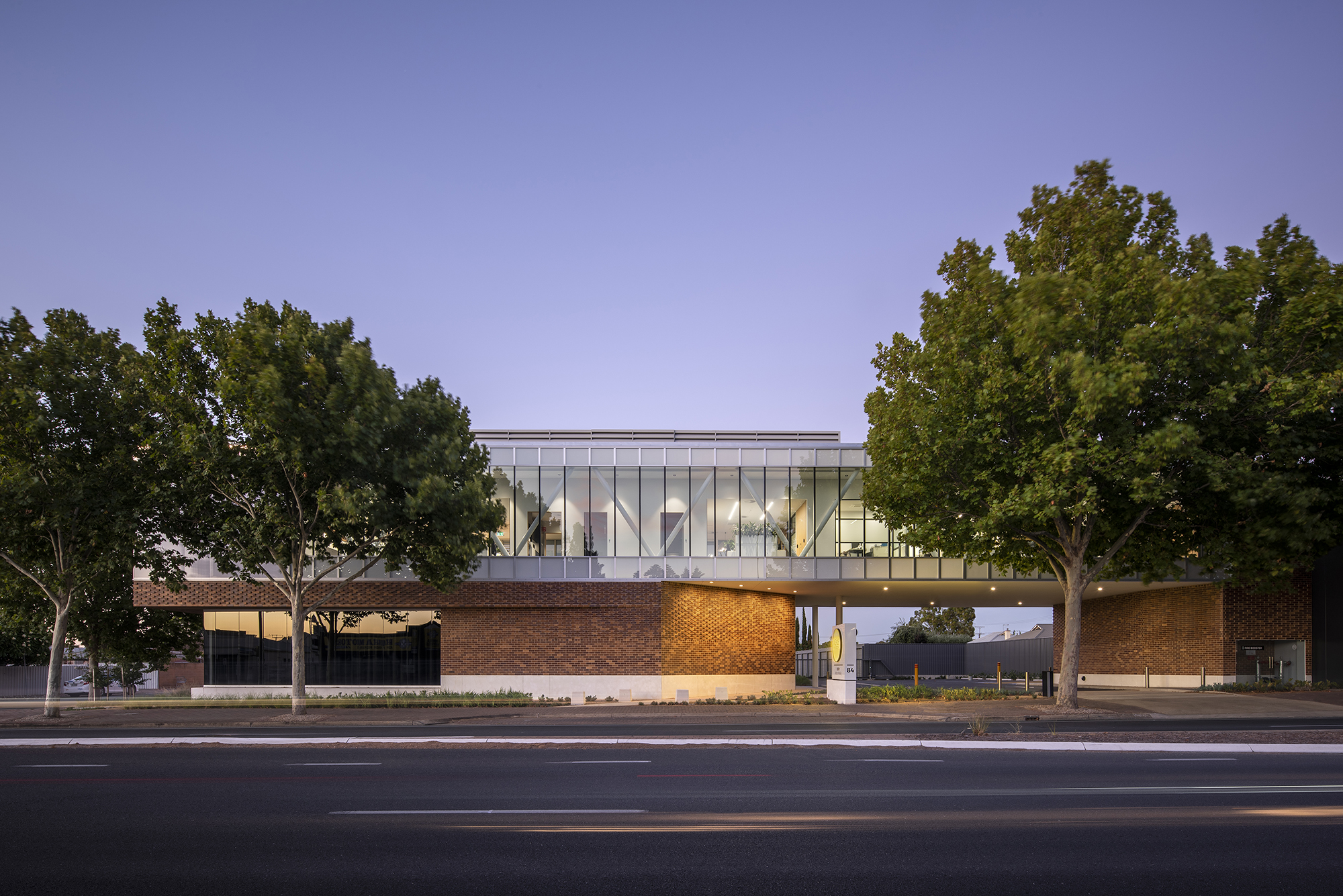
Moss 25 – Circa Morris-Nunn Chua Associates
WHAT: Moss 25 is a 21-suite boutique hotel in Hobart, Tasmania, built to exemplify blending old and new. Accommodation is spread across an 1880s sandstone warehouse and adjoining 5-storey modern tower, with an entrance located in a private laneway tucked in behind Hobart’s vibrant central Salamanca Place precinct.
FINER POINTS: The warehouse’s Georgian façade has been kept completely intact, just the way it would have been back when typical inhabitants were whalers, publicans and convicts. Moss 25’s interiors evoke the Tasmanian landscape as the architects’ sought to “bring memories of Hobart’s wilderness hinterland right into the urban centre”. Stone walls, local timbers, nooks and larger spaces filled with ferns and other greenery, and bespoke Tasmanian designer furniture combine to create warm, inviting spaces. Moss 25 impressed the AIA awards’ selection panel for the way it transformed a disused city space into a “rich environment” that complemented the vitality of its surroundings.
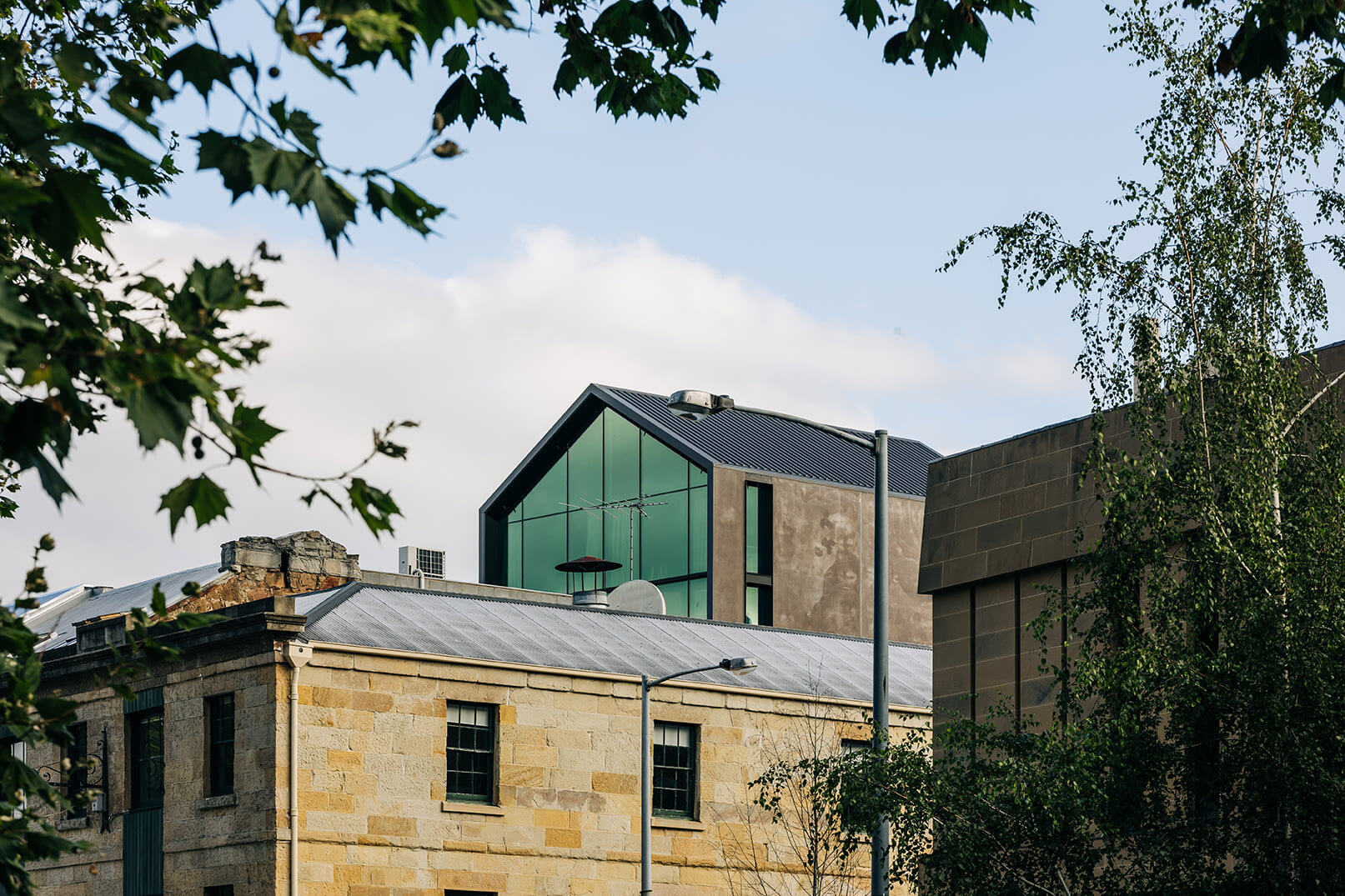
Smart Design Studio (SDS)
WHAT: A futuristic building built as the new inner-city headquarters of Sydney outfit Smart Design Studio. Eye-catching to say the least, its bold and ambitious design embodies the spirit of the area’s industrial buildings, many of which date back to early last century, to form a sustainable, purpose-built and sculptural studio complex.
FINER POINTS: Smart Design Studio (SDS) has already won 9 awards including NSW’s highest accolades for commercial architecture and sustainability, and both state and national awards for interior architecture. The integrity of the original building was paramount in the build which used brick, tiles, galvanised-sheeting, concrete slabs, and steel frames for windows.
On the sustainable front, SDS is naturally ventilated and lit, with large full-length clerestory windows flanking a single. The building is also completely carbon neutral: it captures its own water and generate its own power. “This project has developed our studio’s ambition to make, test, model and prototype new ideas, structures, technology and compositions,” the SDS team says in its AIA submission.
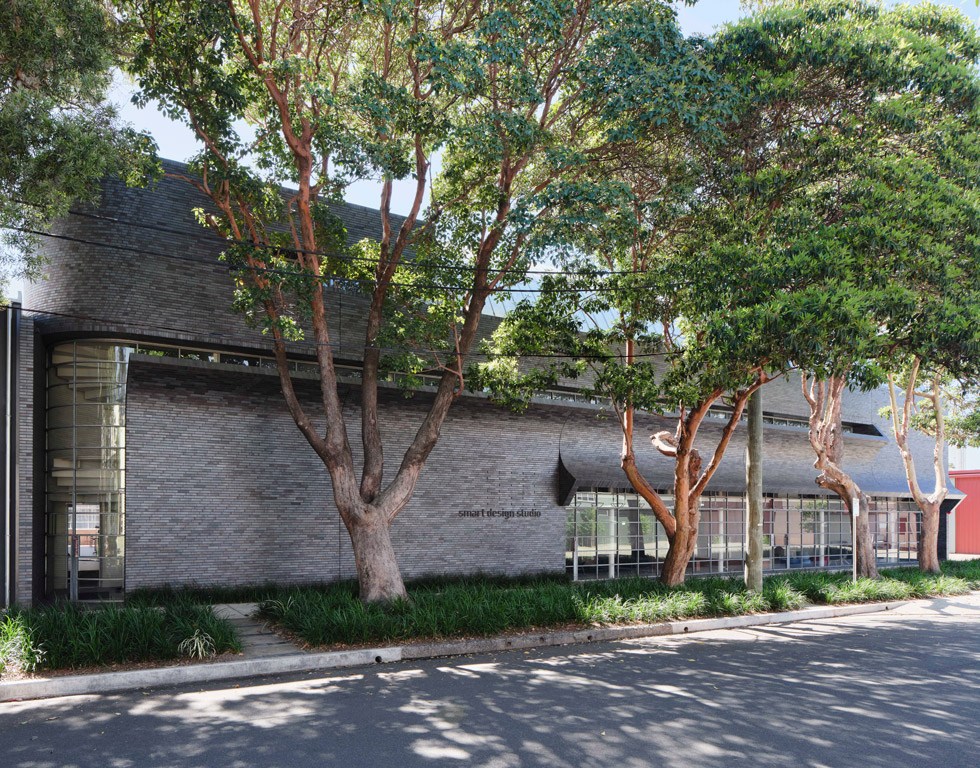
Wangaratta Street – MA Architects
WHAT: A boutique office development created to make a bold statement within the industrial landscape of Melbourne’s inner-city Richmond.
FINER POINTS: Built almost entirely of concrete, the building’s Wangaratta Street façade is divided into thirds: a 3-storey high wall rising from ground level designed to be in keeping with the scale of neighbouring buildings; an offset central 3-storey section, and a further recessed top level. Tenant appeal is enhanced by several outdoor terraces, thermally efficient interiors flooded with natural light and shaded by operable blinds, and an inviting communal kitchen plus ground floor public café.
